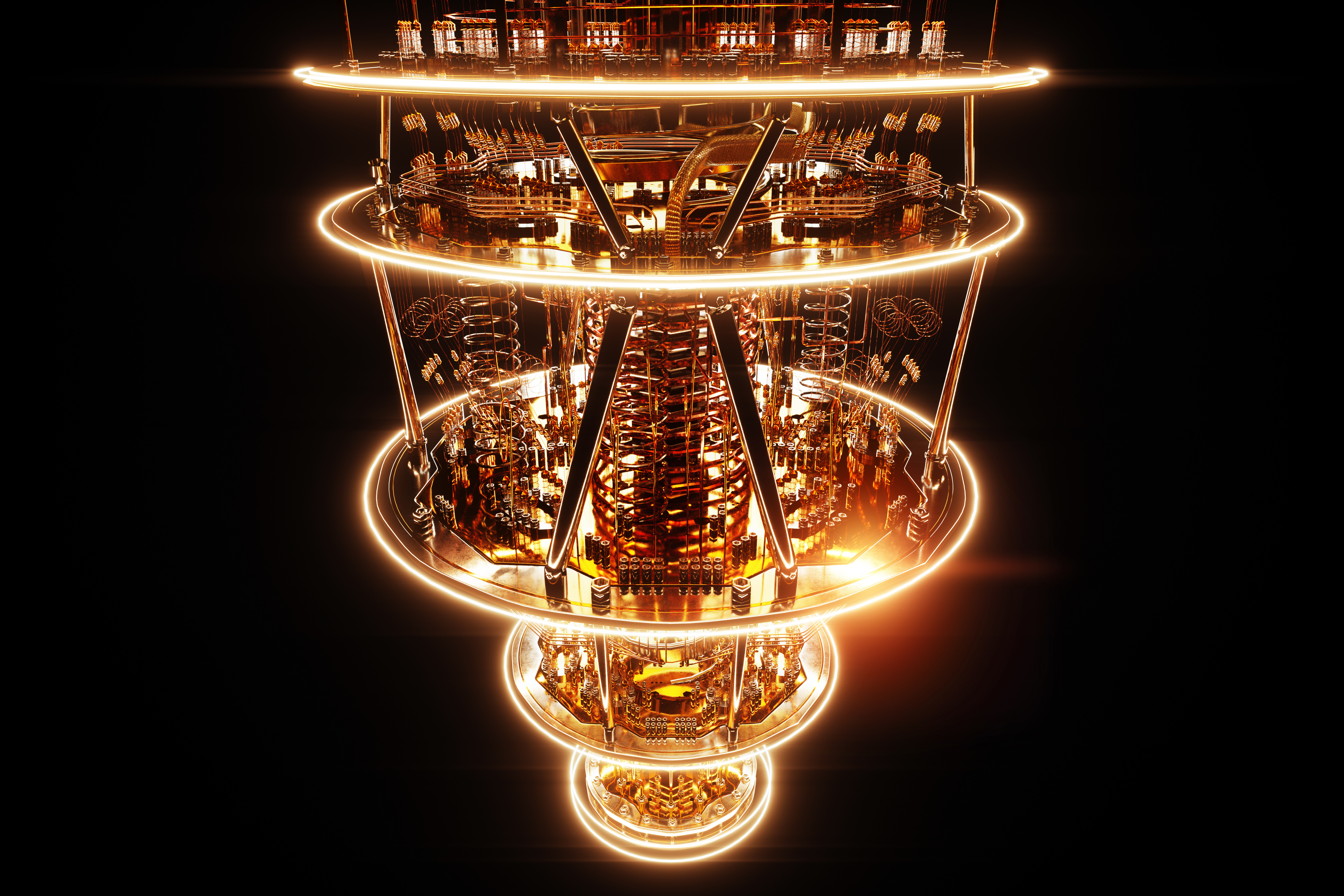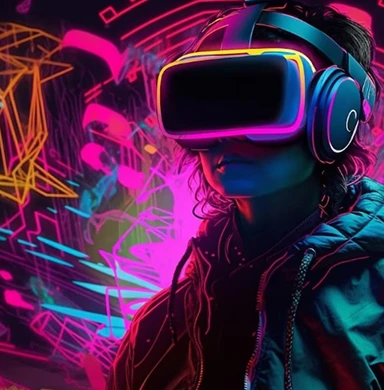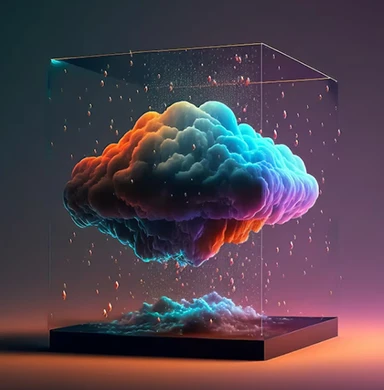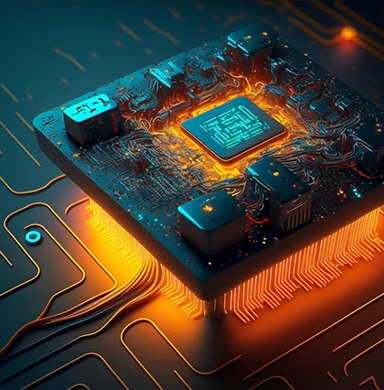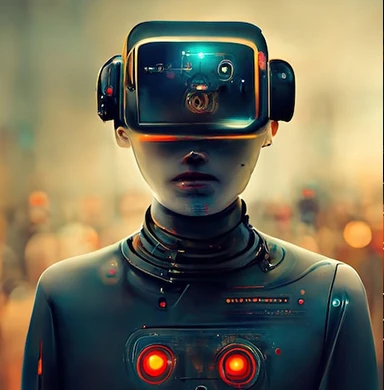

A quantum computer is a (real or theoretical) computer that uses quantum mechanical phenomena in an essential way: it exploits superposed and entangled states, and the intrinsically non-deterministic outcomes of quantum measurements, as features of its computation.
Quantum computers can be viewed as sampling from quantum systems that evolve in ways classically described as operating on an enormous number of possibilities simultaneously, though still subject to strict computational constraints. By contrast, ordinary ("classical") computers operate according to deterministic rules. Any classical computer can, in principle, be replicated by a (classical) mechanical device such as a Turing machine, with only polynomial overhead in time.
Quantum computers, on the other hand, are believed to require exponentially more resources to simulate classically. It is widely believed that a scalable quantum computer could perform some calculations exponentially faster than any classical computer. Theoretically, a large-scale quantum computer could break some widely used public-key cryptographic schemes and aid physicists in performing physical simulations. However, current hardware implementations of quantum computation are largely experimental and only suitable for specialized tasks.
The basic unit of information in quantum computing, the qubit (or "quantum bit"), serves the same function as the bit in ordinary or "classical" computing. However, unlike a classical bit, which can be in one of two states (a binary), a qubit can exist in a superposition of its two "basis" states. When measuring a qubit, the result is a probabilistic output of a classical bit.
If a quantum computer manipulates the qubit in a particular way, wave interference effects can amplify the desired measurement results. The design of quantum algorithms involves creating procedures that allow a quantum computer to perform calculations efficiently and quickly.
Quantum computers are not yet practical for real-world applications. Physically engineering high-quality qubits has proven to be challenging. If a physical qubit is not sufficiently isolated from its environment, it suffers from quantum decoherence, introducing noise into calculations.
National governments have invested heavily in experimental research aimed at developing scalable qubits with longer coherence times and lower error rates. Example implementations include superconductors (which isolate an electrical current by eliminating electrical resistance) and ion traps (which confine a single atomic particle using electromagnetic fields).
Researchers have claimed, and are widely believed to be correct, that certain quantum devices can outperform classical computers on narrowly defined tasks, a milestone referred to as quantum advantage or quantum supremacy. These tasks are not necessarily useful for real-world applications.
For a chronological guide, see Timeline of quantum computing and communication.
For many years, the fields of quantum mechanics and computer science formed distinct academic communities. Modern quantum theory developed in the 1920s to explain perplexing physical phenomena observed at atomic scales, and digital computers emerged in the following decades to replace human computers for tedious calculations. Both disciplines had practical applications during World War II; computers played a major role in wartime cryptography, and quantum physics was essential for nuclear physics used in the Manhattan Project.
Quantum computation is performed using logic gates such as the NOT gate (X) and CNOT gate. Multi-qubit gates allow for entanglement and complex operations. Any quantum computation can be described as a sequence of such gates.
In 1980, Paul Benioff introduced the quantum Turing machine. Later, Deutsch's algorithm (1985), Bernstein–Vazirani algorithm (1993), and Simon's algorithm (1994) demonstrated quantum parallelism. Peter Shor’s algorithm (1994) showed how RSA encryption could be broken, which was a turning point in the field.
In 1996, Grover's algorithm introduced quantum speedup for unstructured search problems, and Seth Lloyd proved that quantum computers could efficiently simulate quantum systems.
By 1998, a two-qubit quantum computer was demonstrated. In 2019, Google AI and NASA announced "quantum supremacy" with a 54-qubit machine, though IBM contested their claim.
The qubit is the fundamental unit of quantum information. Unlike classical bits, qubits can exist in superposition states such as α|0⟩ + β|1⟩, where α and β are probability amplitudes. Multiple qubits enable entanglement, creating exponentially large state spaces.
Different models exist: quantum gate arrays, measurement-based quantum computing, adiabatic computing, neuromorphic quantum computing, topological quantum computing, and quantum Turing machines. All are computationally equivalent in theory.
Quantum cryptography replaces classical encryption with quantum-based methods like quantum key distribution. Research continues into post-quantum cryptography to protect against Shor’s algorithm and similar attacks.
Applications include quantum simulations in chemistry, machine learning, drug discovery, optimization, and breaking cryptographic systems. Quantum computing is still in its early stages, facing challenges like decoherence and error correction.
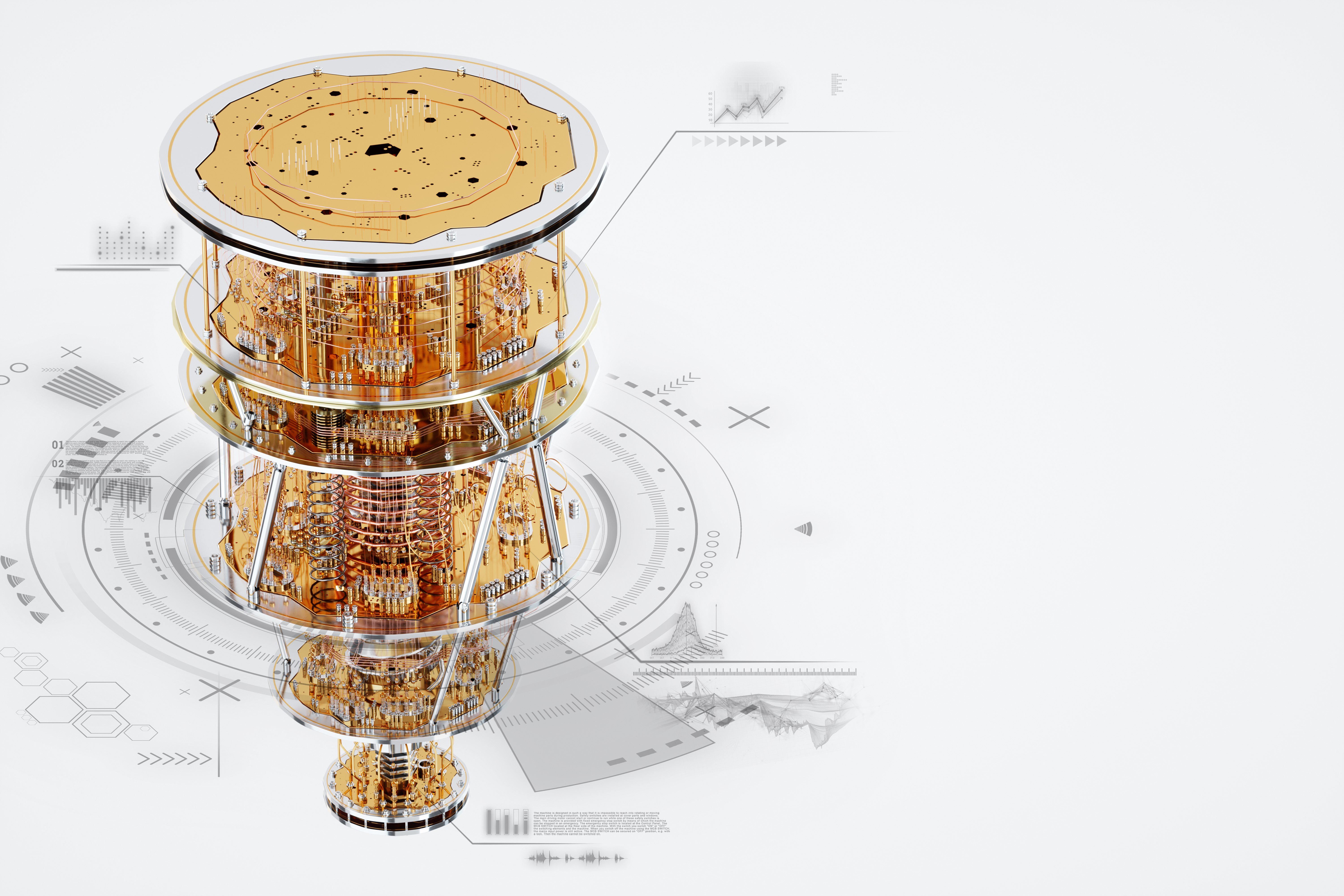
Quantum computing is an interdisciplinary field that uses quantum mechanics to perform computations beyond the capabilities of classical computers. Instead of using binary bits, quantum computers use quantum bits (qubits), which can exist in multiple states simultaneously due to the quantum phenomena of superposition and entanglement.
Bloch sphere representation of a qubit. The state | ψ ⟩ = α | 0 ⟩ + β | 1 ⟩ {\displaystyle |\psi \rangle =\alpha |0\rangle +\beta |1\rangle } is a point on the surface of the sphere, partway between the poles, | 0 ⟩ {\displaystyle |0\rangle } and





